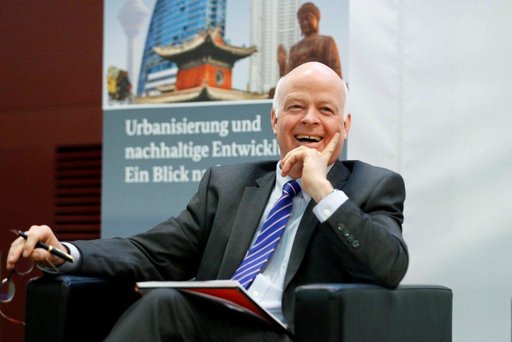
The highest rates of urbanisation in developing countries are now occurring in secondary cities and it is these urban centres, rather than megacities, that will have the greatest influence on the economic development of countries and regions. While these cities should be considered as significant centres for future growth, Nick Michell discovers how a lack of capacity and fiscal autonomy is hindering their progress
The 21st century has been referred to as the ‘Century of Cities’, where cities have become critical to the global economy as drivers of economic growth. Much has been researched, written and spoken about the economic importance of some of the world’s largest cities– London, Tokyo, New York, Shanghai– but little is heard about secondary cities, which are showing the highest rates of growth and playing increasingly stronger roles in the economic development of countries.
According to the World Bank, secondary cities make up almost 40 percent of the world’s urban population, with nearly two-thirds of these located in Africa and Asia. These cities are growing fast, particularly in developing countries, and are now encountering many of the challenges that have become associated with megacities and large metropolitan economies.
Despite secondary cities across Africa, Asia and Latin America becoming important poles of investment and economic growth, they continue to have high proportions of their population living in poverty with limited governance mechanisms and a continuing shortage of financial resources, which hinders their capacity to deal with the complex urban problems they are confronted with.
“In our view there has been a significant lack of attention to urban development generally, on the role of cities in particular, and within that, the lack of attention to the existence, function and importance of secondary cities has been woefully underestimated,” says Billy Cobbett, Director of Cities Alliance. “Secondary cities are at large where the development community and national governments should be paying attention, as up to now they have been substantially under examined, under represented and under resourced.”
Secondary cities range in size from a few hundred thousand people to several million and there are more than 4,000 cities in the world with populations exceeding 100,000 people. Around 2,400 of these have populations of less than 750,000 people, with approximately 60 percent located in developing regions and countries.
They are seeing migration from rural areas but also, interestingly, from the megacities, as their rates of growth begin to decline.
“Already in Latin America, secondary cities represent close to 25 percent of the country’s GDP,” says Christine Kessides, former Urban Practice Manager at the World Bank Institute. “Some of these cities are offsprings of large metropolises such as Mexico City, São Paulo and Buenos Aires that have encountered serious constraints in accommodating urban growth.”
This rapid urbanisation brings with it the significant challenges of job creation, housing, and new infrastructure, and without strong financing mechanisms in place to cope with the demands, these secondary cities will never be able to compete for trade and investment with larger cities. The disparities in per capita wealth, property values, investment, employment and levels of service between the large metropolitan regions and secondary cities are widening in most developing countries.

“In Asia the biggest potential for urban growth is in secondary cities as it is clear that most of the megacities have expanded to their full capacity,” says Jingmin Huang, Senior Urban Development Specialist at the Asian Development Bank (ADB). “In our Urban Operational Plan 2012-2020, we have committed to support secondary cities in forming better integrated urban planning, improved governance and financing structures.”
Huang says such cities need to be integrated into the market with the large metropolises, in order for them to be competitive and develop sustainably.
“We have seen in China that while urbanisation rates are probably the highest in the world, it doesn’t necessarily mean that every city will grow. They need help.”
Decentralisation
Countries across Africa, Asia and Latin America have undergone significant political decentralisation and as a result, local governments have assumed greater responsibilities for municipal service provision. However in most instances this decentralisation has not brought with it the fiscal mechanisms that would supply municipalities with the resources to pay for the infrastructure and services that cities require.
Many local governments in developing regions heavily rely on grants and subsidies from the central government, while also being further hampered by restrictions imposed on borrowing and the obstruction of using other avenues to raise revenue. For secondary cities to successfully develop their economies, national governments must make changes to financial planning and management arrangements to strengthen the capacity of cities to finance and provide essential infrastructure and basic urban services.
Latin America and the Caribbean has been very successful at political decentralisation according to Ellis Juan, General Coordinator for the Emerging and Sustainable Cities Initiative at the Inter-American Development Bank.
Mayors are very important figures in the day-to-day politics of many Latin American economies, with some even going on to become President. But, fiscal decentralisation has gone at a much slower pace.
“The outcome is that you have a very powerful force pushing forward in political decentralisation, but you have another powerful force pushing back in fiscal decentralisation, creating a lot of tension, which is reflected in the high dependence of these emerging cities on federal transfers,” says Juan. “So many responsibilities have been devolved but without the fiscal strength required to meet them.”
Juan points out that the lack of fiscal autonomy has resulted in many municipal public utilities running at such a loss that they are effectively bankrupt. Utilities in areas such as urban transport, solid waste, and water and sanitation, are finding it extremely difficult to provide and maintain the same quality of service.
As population sizes continue to swell, secondary cities need to invest in the infrastructure that could potentially attract new business ventures and create the vibrant communities necessary to establish more dynamic economies, improve livelihoods and increase employment. The inability to invest in the required infrastructure, due to limited finance and capacity, leaves cities as far less creditworthy partners than their larger counterparts. As a result, local governments face limitations in forming partnerships with the private sector to develop strategic projects that are critical to their development.
“At the ADB we are really trying to help secondary cities develop public private partnerships (PPPs) but of course it is not easy,” adds Huang. “To improve credit ratings we are helping cities to increase their current funding resources but also find new avenues of income. We also try to aid the cost recoveries for local utility companies, such as water and sanitation. If you can minimise the government subsidy, by improving efficiency and infrastructure, then it frees up funds for other investments.”
Financing instruments
Due to the financial constraints placed on cities by national governments, local authorities have to find ways to maximise their existing revenue sources, to spend on priority issues. The range of instruments and their opportunities are much wider than generally understood, but have simply been insufficiently explored. This is mainly because reform of revenue and expenditure patterns is highly political and requires, not only changes in laws and regulations, but also restructuring of the institutions collecting and spending revenues, as well as those monitoring the revenue flows.

One of the most prominent sources of revenue for local governments is property tax but very few actually maximise this resource. Secondary cities need to restructure and strengthen their taxation processes to improve efficiency, starting from the basics of simply ensuring much higher collection rates.
“When you talk about taxes, you have to prioritise property tax, as they probably account for about 40 percent of revenue for these emerging cities,’ says the IDB’s Juan. “Before making the decision to raise property taxes, why not spend two years just working on streamlining your tax management systems, digitalise everything, improve reference techniques, and actually start collecting from everybody?”
In many developing countries, local government’s access to capital markets is limited and some are even legally excluded from raising finance this way. However for secondary cities, particularly those with over one million inhabitants, capital markets could provide a way of funding capital expenditure. Larger cities have been able to access markets directly. For example, Johannesburg–after a major restructuring of its finances–has been regularly issuing bonds on the basis of ratings of AA and above. The city has also tapped into longer-term funds, issuing bonds with 15-year maturities. Similarly, in south Asia, some Indian cities have tapped local markets based on ratings and raised finance through municipal bonds, and smaller cities have accessed finance through pooled bonds. Unfortunately, Dakar’s recent attempt to launch the first municipal bond for a sub-Saharan city outside South Africa, while promising much for secondary cities, is currently on hold at the mercy of the national government (see article on page 36).
With revenue collection in a large proportion of countries centralised, cities are often left waiting for transfers from their national governments, with the amount and timing of those payments varying depending on the political or economic situation of the time. This lack of fiscal autonomy means that local governments are regularly unable to predict their revenues from one year to the next, making them unattractive to potential bond investors, who need evidence of stable revenue streams and a likelihood of a return on their investment.
“In general terms, I would say that secondary cities going to market is not going to happen any time soon, for example in most of Africa and certainly south Asia,” says Cobbett. “This is for a number of reasons; one would of course be the legal regulatory framework, another the capacity of the cities themselves to organise that, and the third the functioning of the domestic capital markets themselves.”
Cobbett says the most pressing issue is the legal and regulatory framework.
“Very often we find that governments do in fact have legislation pertaining to decentralisation but it is frequently imperfectly implemented or not implemented at all.”
National versus local
One of the major issues hampering secondary cities is often the conflicting relationship between local and national governments. For a country to function smoothly and develop sustainably these two levels of government must work together. A country needs to be considered as one economy and one set of problems that require fixing. The overriding principle should be on efficiency determined by capacity and subsidy, so that the decisions get taken at the lowest effective level.

“The golden rule of administration is that risk and responsibility have to come hand in hand,” explains Cobbett. “If I have the responsibility and I’m authorised to take the risks, then I’ll live with the consequences but very often you get the responsibility and risk moved down, but the resources remain elsewhere.”
If harmony is to be reached then local government cannot be considered an inferior form of government, treated as little more than an administrative arm of a higher tier or seen as potential competition to the national level. City administrations need to be respected and given the responsibilities, capacity and financial resources to enact positive change. In return, secondary cities need assistance in their capacity building to be able to handle increased fiscal responsibility.
“There is no easy answer but you do have to worry in the long- term about the capacity that exists at a local level,” adds Cobbett. “For me the real challenge is, if you want an indicator, when will local government become the preferred choice of professionals emerging from university? When does local government become an enviable career? This means having good career prospects with all the developmental challenges and proper remuneration.”
Knowledge sharing
While urban literature has become more comparative, diverse, and global, it has maintained a clear focus on scale and power, often in combination, attracting the attention of researchers to certain cities only. There must be more attention paid to the potential of secondary cities and the role they are playing in the economic development of countries.
Best practices on fiscal decentralisation across Africa, Asia and Latin America, need greater dissemination, and this requires the help and support of international organisations.
The Commonwealth Local Government Forum (CLGF), an organisation that works to promote and strengthen democratic local government across Commonwealth countries, is working particularly hard on sharing best practices on fiscal decentralisation across its network.

“Being a very broad based international network, clearly one of our advantages is that we get a lot of examples of what has been done well and what hasn’t,” says Carl Wright, Secretary General of CLGF. “Just sharing these experiences, the peer-to- peer learning among mayors and chief executives is sometimes as important as some of the formal work, and so a lot of our work is about sharing best practices on fiscal decentralisation.”
One of the best examples, says Wright, is South Africa, where cities have significant powers in their legislation to agree integrated development plans, including engaging with the private sector to attract investment.
“Having the freedom to negotiate with the private sector is a huge advantage,” adds Wright.
In future decades, secondary cites will account for the largest share of urban growth in developing countries and their development will largely shape a country’s economic future. However, their potential for growth, in many cases, is being hindered by a lack of fiscal decentralisation, leaving them struggling to compete for business, investment and jobs, against larger metropolitan cities. If secondary cities are to grow and develop sustainably, much greater attention must be paid to examining, measuring and understanding the key drivers that underpin their development.

